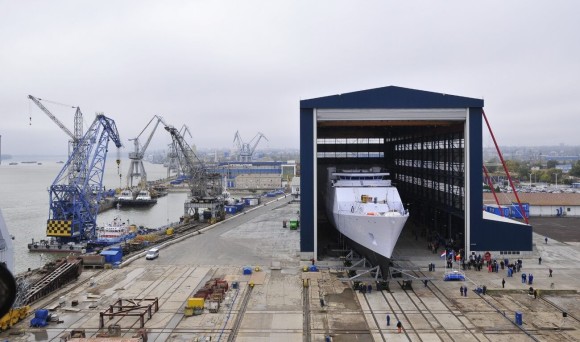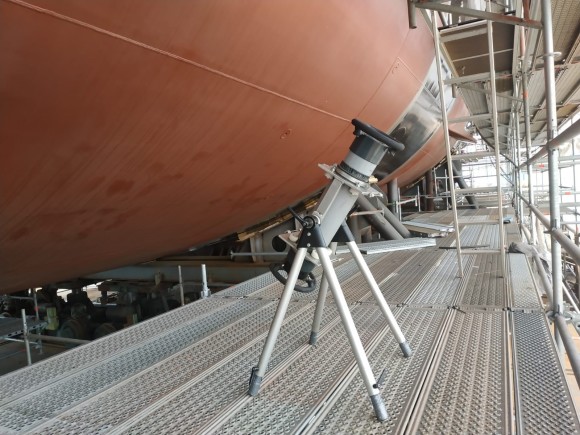Long before the Romans, longboats, canoes, sailboats and kayaks were being assembled in the small Romanian town of Galati. Fast-forward a few centuries into the future, and without much surprise, it is fitting that Galati, which sits alongside the Danube, now welcomes one of the most important shipyards in Romania.
Nowadays, thanks to the Damen group, a Dutch shipbuilding company that owns the shipyard since 1999, the Romanian plant has delivered more than 400 vessels to clients all over the globe. This incredible pace would not be possible without skillful professionals and reliable equipment that allows accurate and fast processing. From designing and cutting to assembling, the entire process can take up to two years for the largest ships.
A typical vessel assembled in Galati can add up to 100 to 200 km of welds over the entire process. Such an impressive number of potential defects calls for highly skilled NDT inspectors and robust
apparatus.
While the vessel-in-the-making is going through the different stations of the building process (up to 20 stations in some cases), welders and NDT experts (Level II and III), work hand in hand to ensure the quality of the welds that make up the future ship. NDE officers at Damen usually issue two types of control during the inspection phase. Ultrasonic and radiographic testing are conducted on hundreds of welds ranging from 6 to 25 mm of thickness. The number of tests needed and the quality of the results expected is inferred from the quality standard requested by the client.
Since clients are international, so are the norms and classes used in Galati. Norms such as ABS, BVS, Lloyd’s, Bureau Veritas and GL-DMV can be implemented on different ships being assembled at the same time in the plant. This versatility is one the main reason Damen group has selected Teledyne ICM’s CP200D portable x-ray generator as its main equipment to conduct its radiographic testing.
“We chose the CP200D because of its reliability in the field, ease of use, and most importantly, lightweight. We tried a few other brands in the past, but the weight of those generators unabled our team to conduct the inspections needed within the deadlines.” – Cezar Petru Ardeleanu-Blaga – Head of QC Department – Damen Shipyards Galati.
The NDT team in Galati couples the power of the CP200D to a digital plate located inside the ship. With the help of an adjustable tripod and its tailor-made grip, the x-ray source is position at a perfect angle in front of the weld and thanks to Teledyne ICM’s constant potential capabilities; the exposure is over in less than a minute.
Given the sheer number of welds that must be inspected in the course of a session, Galati’s team has no time to waste between shoots. Once again, the 100 % duty cycle that offers the CP200D is key in terms of efficiency. Without cooling periods required between exposures, the inspectors are able to optimize their time on the plant and processed to as many tests as possible.
Even though, the Romanian team thoroughly inspects the entire ship – shell, decks, and longitudinals included – and its staggering number of welds, it is remarkable that only a very small percentage of the welds inspected by the RT technicians contain defects. That small amount of defects, mainly porosity, greatly highlight the quality and professionalism of the Romanian welders working in Galati.
The combination of expertise and reliable equipment is the reason Teledyne ICM generators are scattered around Easter Europe and found in three other shipyards in Romania and along the Danube River.
Laurent Colson – Marketing & Communication Manager


